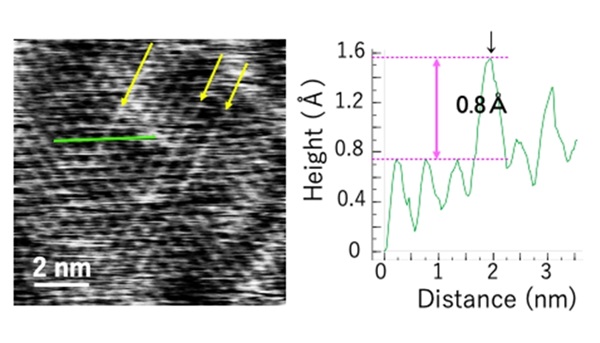Abstract:
Formation of prebiotic RNA is induced by the catalysts such as transition metals, magnesium ion and clay minerals [Ferris and Ertem (1992) Science 257, 1387-1389]. However, dehydration is necessary for polymerization of sugar molecules, so it has been estimated that the prebiotic RNA is hardly formed in the wet environment in which the catalysts exist on the primitive earth.
We have investigated the effects of impurities on the crystal growth in solution and the hydration structure at the solid-liquid interface by frequency modulation atomic force microscopy (FM-AFM). FM-AFM enables us to observe the atomic-scale phenomena and the three-dimensional water distribution at the solid surface in situ. So far, we have found that magnesium ions have the effect of disturbing the hydration structure at the crystal (calcite) surface (Fig. 1) and that the ion adsorption on the clay mineral surface is ordered so as to minimize the hydration energy of the crystal surface (Fig.2). These findings provide us ideas that hydrophilic ions such as magnesium instantly and locally induce dehydration of the molecular surface even in the polymerization reaction of sugar, and sugar molecules are adsorbed on the clay surface. Based on these results, we have started the project to clarify the mechanism of the sugar polymerization in water on the primitive earth.
Speaker: Dr Yuki Araki, Department of Physical Sciences, Ritsumeikan University.

Speaker bio:
Dr Yuki Araki graduated from Tohoku University (Doctor of Science, 2014). Following graduation, she joined Department of Chemistry at Kobe University (2014-2016) and then moved to Kyoto University's Graduate School of Engineering (2016-2019). Currently she is following her research career at the Department of Physical Sciences, Ritsumeikan University, working in the field of crystal growth and surface science.
Host: Shawn McGlynn, ELSI.
Date: Fri, 18 September at 15:30 JST (Fri, 18 September 2020 at 06:30 UTC)
Venue: Online

